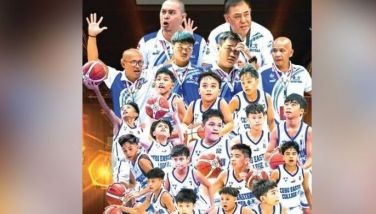Student-Athlete Protection Act
REPUBLIC ACT NO. 10676: “AN ACT PROTECTING THE AMATEUR NATURE OF STUDENT-ATHLETES IN THE PHILIPPINES BY REGULATING THE RESIDENCY REQUIREMENT AND PROHIBITING THE COMMERCIALIZATION OF STUDENT-ATHLETES.”
That’s taken verbatim from the latest relevant law passed by President Noynoy Aquino; one which came as a result of the recent developments in school-based sports. Much has been said about residency problems, the “commercial” nature of school-based sports and the ever-evolving meaning of the term “student-athlete.”
Residency? The most celebrated cases were those of Ateneo de Manila’s Jerie “Koko” Pingoy and Hubert Cani, and U.P. swimmer Mikee Bartolome. They and other athletes who are lesser known, were required to sit out two years of their collegiate careers due to a residency rule of the UAAP. They finished their secondary studies in UAAP schools different from the university where they are now enrolled. But that will now bea thing of the past. With this Student-Athlete Protection Act or R.A.10676 in place, any high school graduate who played for his or her high school team, may now enroll in any other school without having to serve any type of residency. Thus, Cani can now play for Ateneo this season although he had to sit out a year while the UAAP rule was in effect and RA 10676 was not yet signed into a law. For clarification, the two year residency rule for high school graduates is unique to the UAAP and is not implemented by other leagues. In Cebu, the CESAFI allows high school graduates to play for any college of his or her choice without having to serve a year of residency. This law will now stop other leagues from copying the UAAP’s controversial rule.
But what happens if a high school student-athlete wishes to transfer to another high school; or if a college student-athlete who wants to transfer to another college? Section 4.B of the law says, “Residency requirement shall likewise not be imposed on a high school student-athlete transferring from one high school to another high school: Provided, that, to address the issue of piracy, a maximum of one year residency may be imposed by an athletic association on a high school student-athlete who transfers from one member school to another;” For college transferees, this is Section 4.C: “In the case of a tertiary student-athlete transferring from one college or university to another, a maximum of one year residency may be imposed by an athletic association before a student-athlete could participate and represent a school in any athletic competition.” The law thus allows leagues to implement a one-year residency in this case.
But is the law all about residency? The aspect that I actually find it more interesting are the details regarding what a school can’t do should one of its athletes transfer to another school. The school can’t file administrative charges, require payment of tuition or other fees covered by a scholarship granted to the athlete, hold on to the student-athlete’s grades, school records, clearance, or transfer requirements, give incomplete grades and impose any other type of punishment. We’ve heard of cases where schools require students (who transfer) to pay back the school for the tuition fees and expenses that the school incurred while he or she played for the school. His Form 137 or Transcript of Records and other school records are likewise locked up and never released, thus giving the student enrollment problems at his new school.
In a rather ironic twist, the law’s Section 5 also allows schools to provide benefits and privileges to its student athletes such as scholarships, allowances, uniforms and “other reasonable and similar benefits that would further enhance the student-athlete’s academic and athletic performance.” I say ironic since this is an understatement of sorts. The schools which are supported by the deep pockets of alumni or sponsors provide loads of benefits to its student-athletes, and the buzz is that some schools are now run like commercial or semi-pro teams. Juicy allowances, dorm privileges, meals, and shoes are par for the course. And this leads me to Section 6 of the law: “Commercialization of Student-Athletes – Schools shall not offer a student-athlete or the immediate family members benefits or incentives beyond those enumerated under Section 5 of this Act which are contrary to the nature of amateur sports and which may result in the commercialization of a student-athlete.” Now who is the authority in determining whether or not which items are “contrary to the nature of amateur sports?” Amateur sports itself has evolved through the years with superstar athletes making a lot of money in allowances, merchandising deals, endorsements and other creative gimmicks.
The “punchline” of this Act? The Department of Education and Commission on Higher Education, in consultation with the PSC, have been tasked “to develop the rules and regulations implementing the provisions of this act.” Like many of our laws, the big question is if this can be implemented. Good luck to us all. Is RA 10676 the answer to all our problems regarding student-athletes and high school and collegiate sports? I wish I had the answer. But it could be that crucial first step to a more comprehensive and encompassing look at student-athletes.
* * *
Time-out: Happy birthday to Hayato Ayabe. (FREEMAN)
- Latest




















